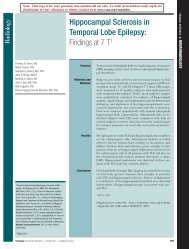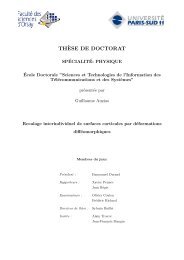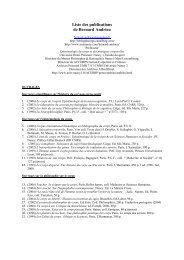Integrating MEG, EEG and fMRI data
Integrating MEG, EEG and fMRI data
Integrating MEG, EEG and fMRI data
You also want an ePaper? Increase the reach of your titles
YUMPU automatically turns print PDFs into web optimized ePapers that Google loves.
How can we integrate <strong>MEG</strong>, <strong>EEG</strong>, <strong>and</strong> <strong>fMRI</strong> ?<br />
b. Dipole seeding, i.e. utilize <strong>fMRI</strong> activation maps<br />
to constrain <strong>MEG</strong> inverse solution<br />
• The brain areas identified as active by <strong>fMRI</strong><br />
during a specific task are used to guide the <strong>MEG</strong><br />
inverse solution<br />
• It is not possible to simply position the <strong>MEG</strong><br />
source in a fixed location, since <strong>fMRI</strong> <strong>and</strong> <strong>MEG</strong><br />
detect different physical phenomena<br />
• The ECDs are let free to move inside a small<br />
volume, their orientation is let free as well, <strong>and</strong><br />
a figure of merit is optimized, in order to obtain<br />
the time course of each source






